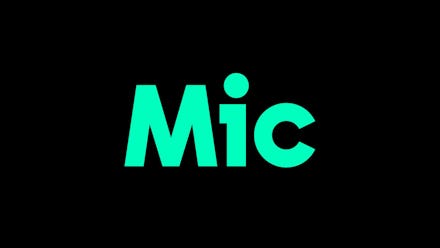A note on editorial transparency

Mic aspires to be one of the most trusted sources of news, yet we recognize that Americans’ trust in news media is at an all-time low. We realized that we could be doing much more to expose the reporting processes behind our journalism to the millions of users who encounter Mic’s brand every month.
We at Mic have our own ideas about the effective signals of journalistic integrity, but we wanted users to directly corroborate our theses. This spring, we invited 20 users — sourced from Facebook and Craigslist ads — to our office. We asked them to share their thoughts on mock-ups of 16 editorial indicators developed by the Mic newsroom. Through our interviews, we identified the features that elicited the most consistently strong, positive reactions. We then surfaced those signals on stories on mic.com as well as on third-party platforms like Facebook Instant and Apple News, where possible. The three clear standouts were:
Source boxes: A relevant list of citations and references made within the article will appear at the bottom of selected articles on Mic to reflect original reporting.
Related articles by an author: Following an article, we will include other recent and related stories by the same author, which indicate an author’s expertise in the subject at hand.
Video credits: Included as the end card in all of Mic’s videos is a masthead of the reporting and production team responsible for creating the video.
We also included a “trust survey” at the bottom of every article, which allows us to gauge user’s perception of trustworthiness of Mic, on an article level and on a macro level over time.
After conducting our own research, we partnered with the Trust Project, an international consortium of news and digital companies focused on providing information about what type of information people are reading, who and where the information is coming from and how a story was crafted. The group developed a list of many attributes for news publishers to surface on stories, including:
Editorial standards: Mic’s written standards for editorial staff, including editorial mission, sourcing standards, guidance on gifts and travel, social media usage policy, ethical guidance and much more.
Masthead: A complete list of the Mic newsroom and leadership team.
Type of work indicators: This is a label that denotes what kind of work an article is. At Mic, the labels we currently use include Opinion, Column, Essay, On the Record and Review.
Author contact information: Contact information for Mic staff will be included following each article so readers can send tips, share information or comment on the story.
Ownership and funding information: This details the sources of a company’s money, which can be relevant to users’ assessment of trustworthiness. In Mic’s case, we’re a privately held, venture-backed, for-profit media company.
And others that Mic will be releasing in the coming months:
Diversity report: In the coming months, we will publish an updated and more extensive diversity report, offering a more thorough look into our hiring practices and the makeup of the company at large.
Video source boxes: Similar to the text source box, Mic’s videos will have a source box in the coming months.
Advertising guidelines & policies: A clear overview of the kinds of advertising you will find on the Mic website and Mic’s platforms, along with the policies the company adheres to.
What more can we do to increase visibility into our reporting? Let us know at feedback@mic.com.
The above indicators will also enable search engines and social media sites to differentiate between news that abides by the best standards in journalism transparency and that that does not. Google, Facebook and Bing are all partners in the Trust Project and will highlight stories that follow these high standards. You can read more about the initiative, partners and funding here.